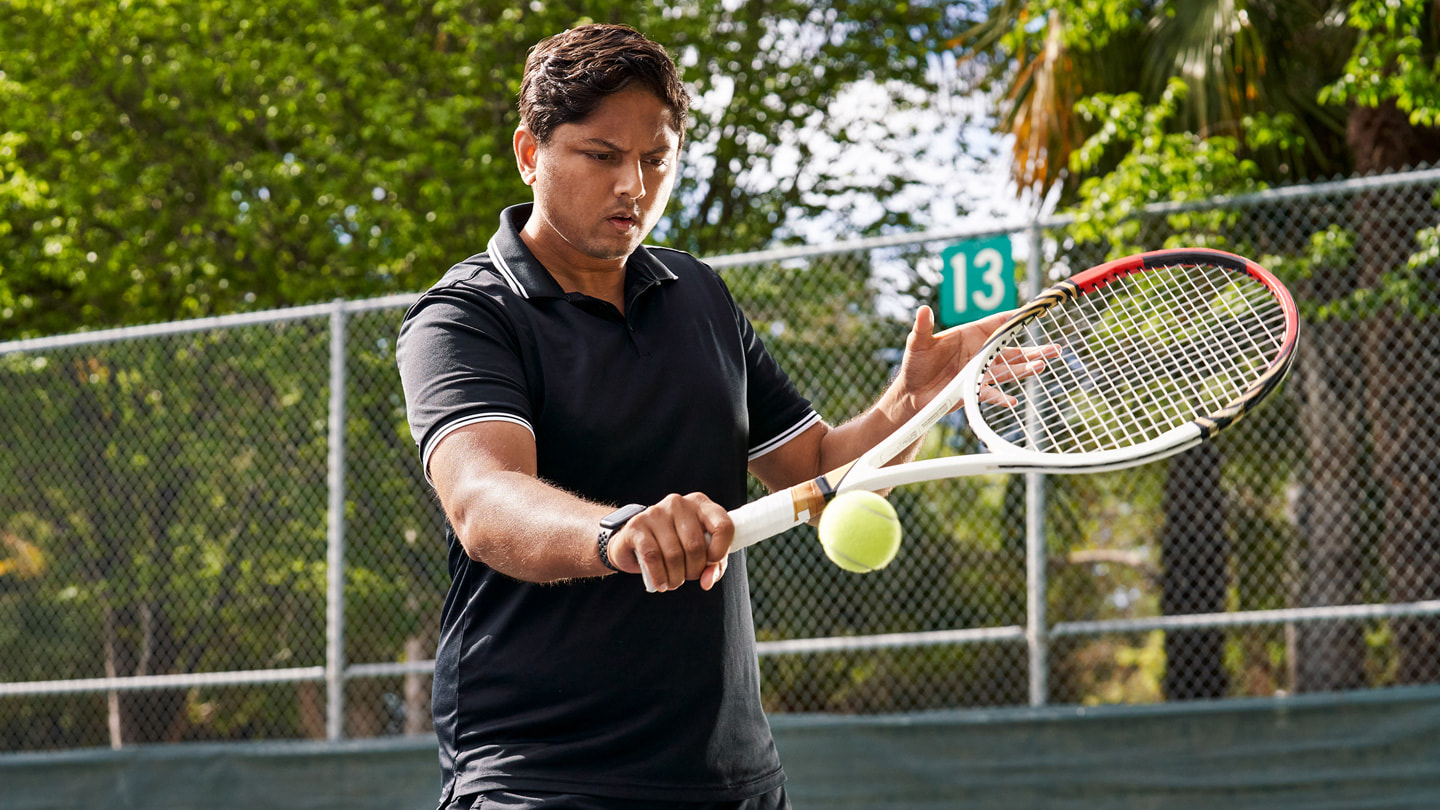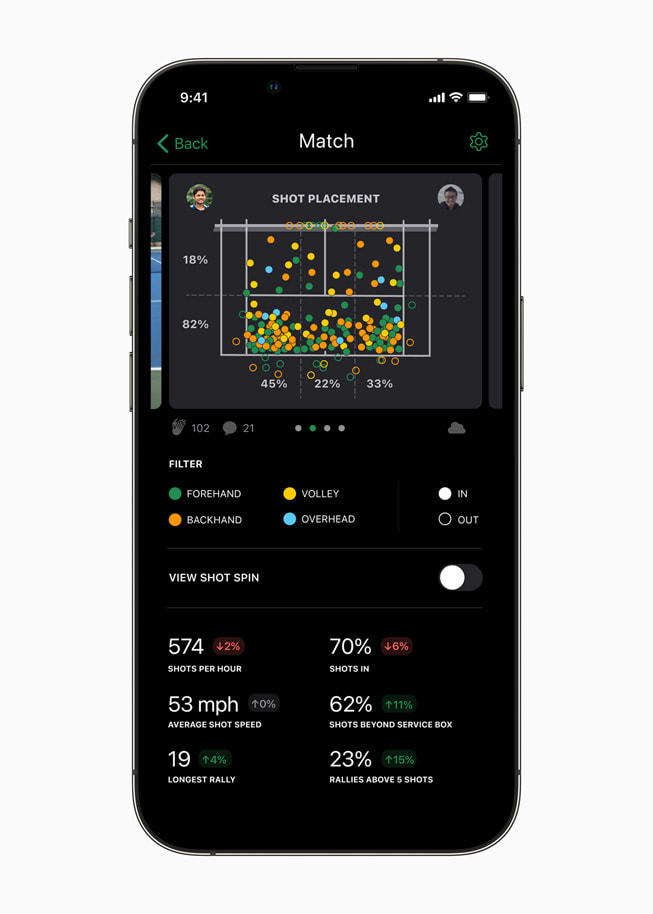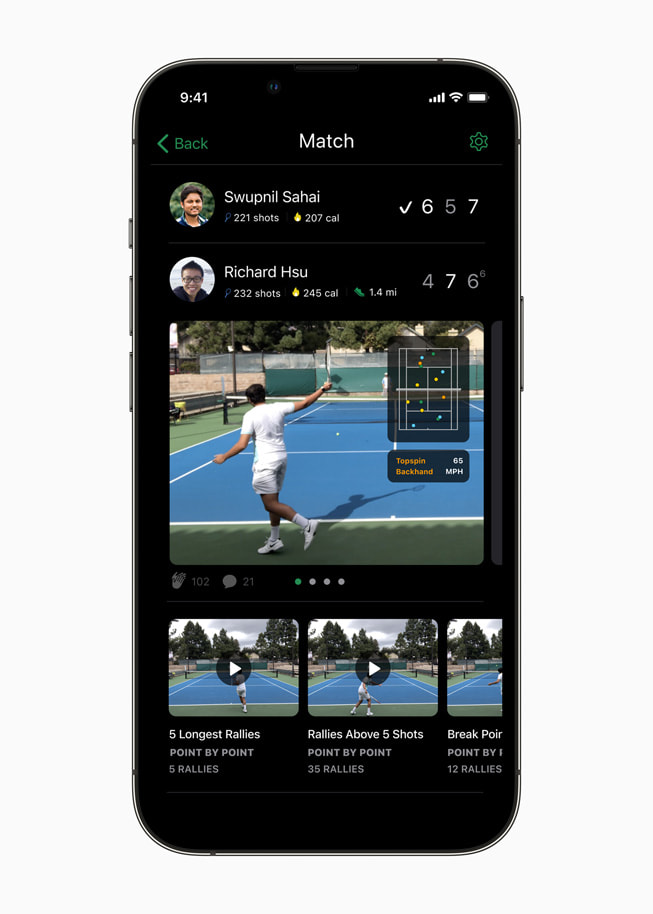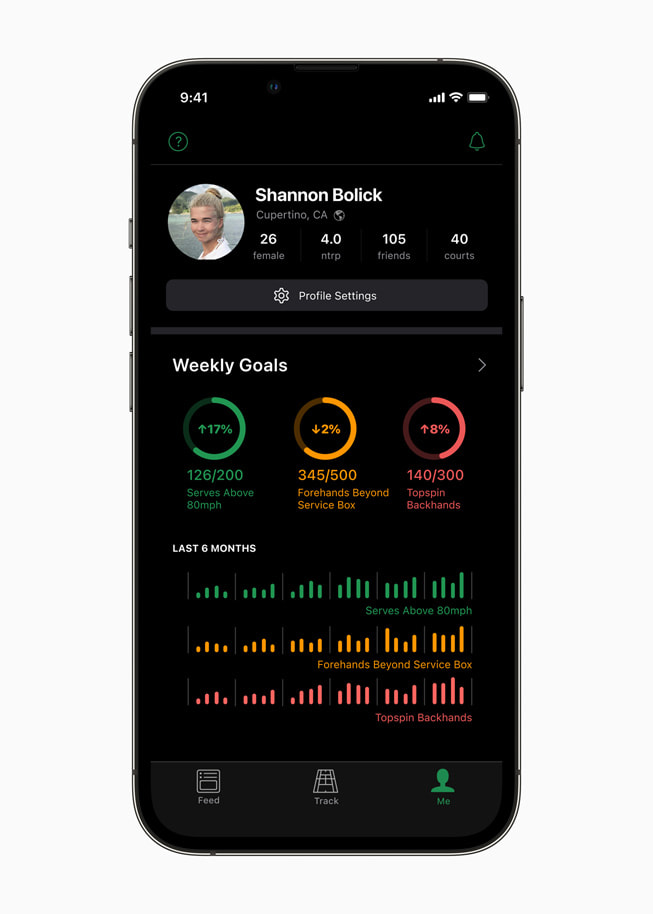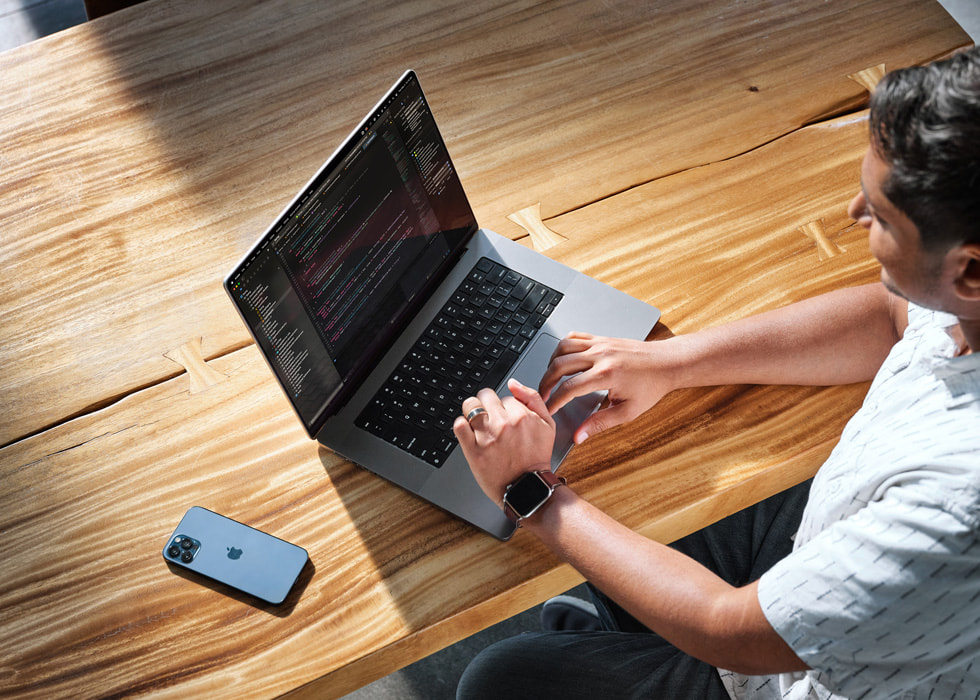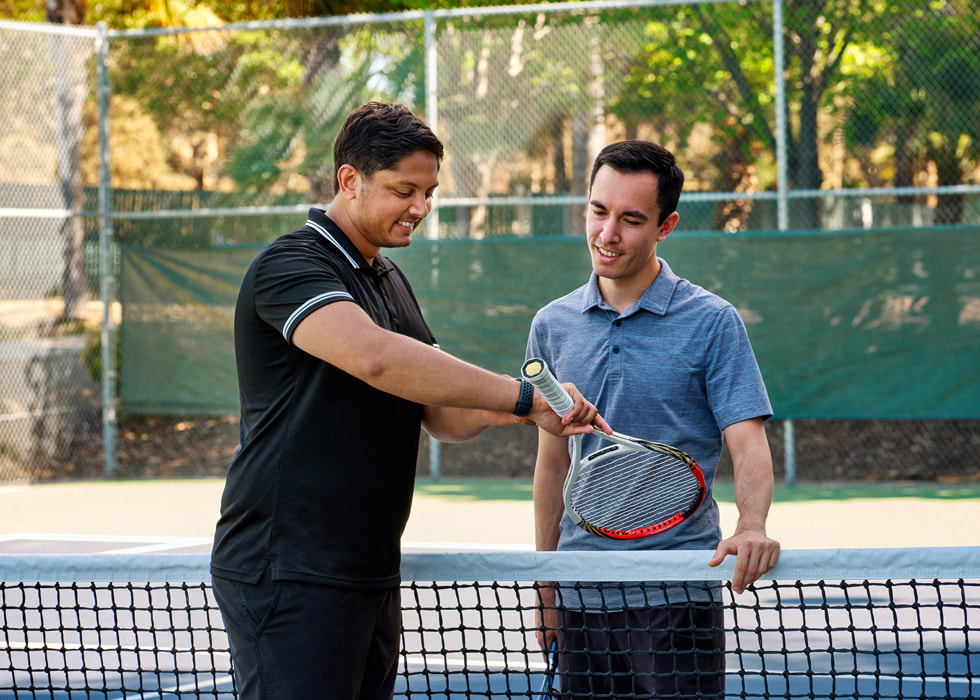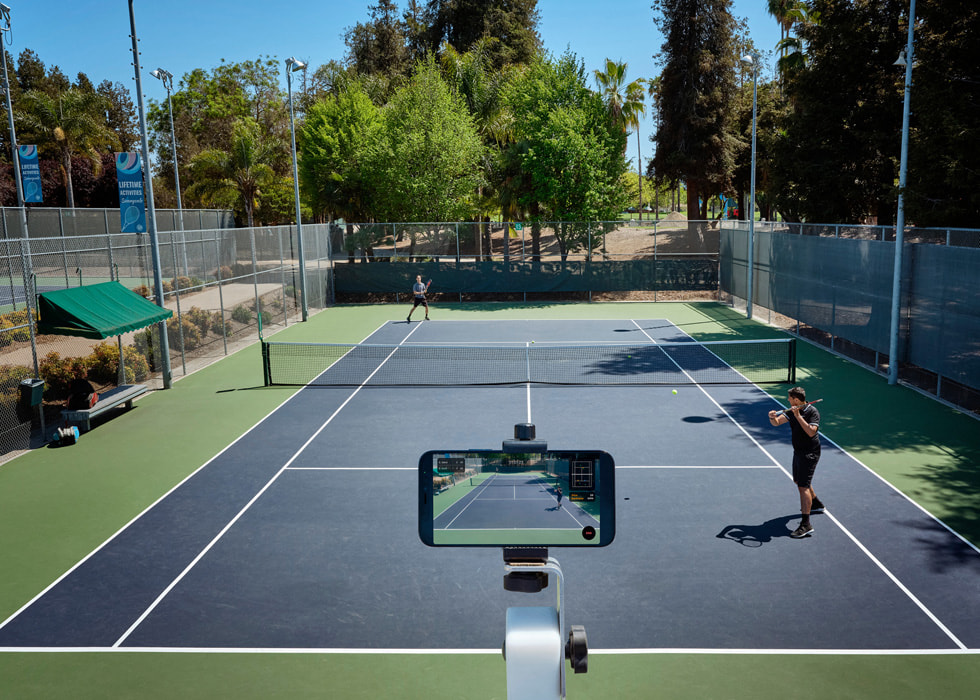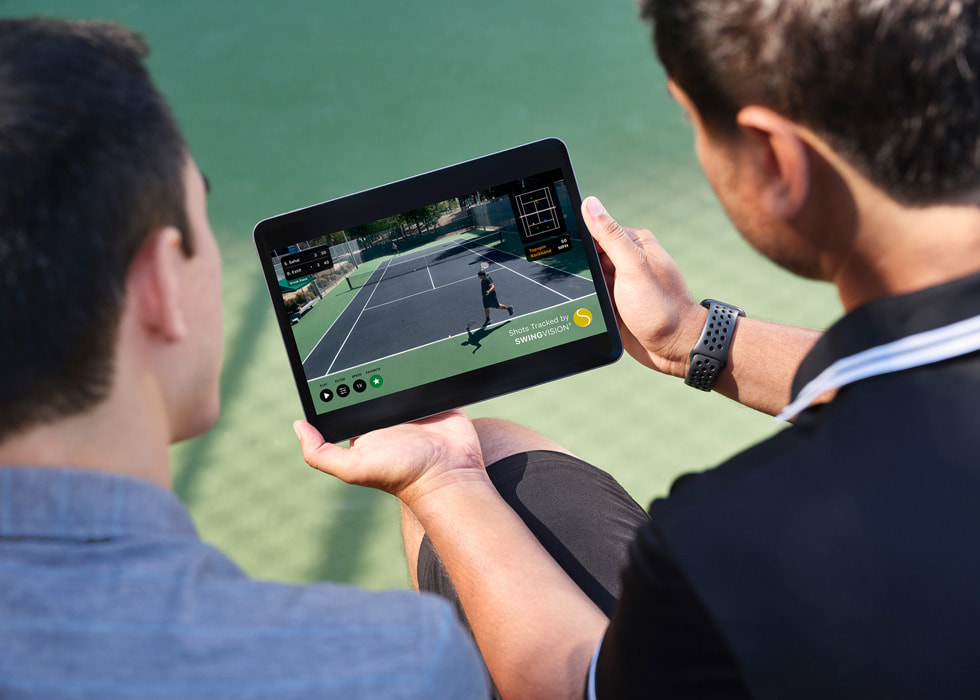apple stories
Swupnil Sahai and his co‑founder serve an ace with AI‑powered SwingVision
The performance-tracking iPhone app looks to make tennis more accessible than ever
While Swupnil Sahai hasn’t stepped out onto the hallowed clay at the French Open or the grass court at Wimbledon, he owes his livelihood to tennis — a passion he traces back to his childhood.
Growing up in the Bay Area, the CEO and co-founder of tennis performance-tracking app SwingVision — only available on the App Store — spent much of his time out on the court. An early interest stoked by his father led Sahai to play on his high school tennis team, and eventually the sport served as a form of stress relief while he attended the University of California, Berkeley.
While working as an engineer on a team that used 3D object tracking to help refine autonomous driving, Sahai — a two-time WWDC scholar — had an epiphany: The same techniques and principles he was using on the job could help him level up on the tennis court. However, the tools that were available on the market for tracking and analyzing his game were expensive, cumbersome, and often hard to come by.
“Back then, you had a few companies making sensors you could attach to your rackets, and they would track some data,” Sahai elaborates. “And in terms of using cameras, the closest thing was this 10-camera system that some high-end clubs had, but it was around $10,000 a court.”
When Apple Watch launched in April 2015, Sahai recognized the potential of a device that would bring intelligence right to a user’s wrist. The seed for the idea that ultimately became SwingVision began to sprout.
“That sparked my brain right away. I thought, ‘If I have a computer on my wrist, I could actually analyze my form and my strokes,’” he says, looking back at the initial notes he made on his iPhone.
After teaching himself how to code using Apple’s Swift programming language, Sahai enlisted the services of his college roommate and fellow tennis enthusiast, Richard Hsu. What began as a side project called Swing — released as an Apple Watch app in 2016 — eventually morphed into a full-time endeavor, necessitating a team that’s since grown to include 12 employees.
Sahai and Hsu then officially launched SwingVision on the App Store in November 2019, harnessing the power of Apple’s Neural Engine in iPhone, iPad, and Apple Watch, combined with the minds of advisors and investors such as Andy Roddick and James Blake. “That’s really been the big difference: the machine learning processing that’s possible,” he says.
The app recently launched a new function that enables tennis enthusiasts to contest out-of-bounds calls right from their wrists using Apple Watch. “It’s almost pushing the limits of humanity because it allows you to call lines more accurately than you could with your own eyes,” Sahai says. “Everything we've been able to do in terms of processing video in real time — getting insights right away, allowing users to challenge line calls right there on the court — none of that would be possible without the Neural Engine.”
The other major difference: the App Store, which spotlighted SwingVision as an App of the Day in 2021 and brought the app to the feeds of millions of customers instantaneously.
“The App Store does a good job of surfacing apps that are going to be relevant to the customer and showcasing small apps, not necessarily just the big ones,” Sahai explains. “Being featured as App of the Day has been tremendous for us, not just in generating downloads the day of, but also in becoming a badge of approval that continues to add credibility in conversations with potential customers, investors, and employees for several months afterward.”
“The App Store gives a platform for small teams and even individuals to reach such a massive audience without having to spend a massive budget on marketing,” he continues. “The developer and app stories featured on the Today tab in particular are so powerful because they tell a deeper story that helps build branding, which is very difficult for a team of any size to accomplish.”
Today, SwingVision has over 10,000 monthly users and counting — and there’s much more to come, thanks to ARKit, Apple’s augmented reality development framework for iOS and iPadOS mobile devices. Using ARKit, Sahai anticipates being able to add graphics right onto the court — an exciting prospect, he says, given the livestreaming capabilities the company is currently working on incorporating into the app.
He imagines a future where all tennis matches are livestreamed by default, one in which parents who once had to miss their kids’ big matches are able to tune in remotely from wherever they are, thanks to a well-positioned iPhone or iPad running SwingVision. The device could almost instantaneously transmit a video feed without using too much battery or sacrificing quality.
For coaches and players, a major advantage SwingVision provides is the ability to rewatch and analyze a match recorded in the app on their favorite devices soon after it’s over. At present, SwingVision is seeing particular growth in the college arena, Sahai says, with more than 30 Division I teams currently using the app and many others expected to come on board this summer.
The app is also starting to catch on with a certain segment of professionals looking to crack into the sport’s upper echelon: “players outside of the top 200 who don’t have the million-dollar contracts or coaches who can travel with them all the time,” Sahai elaborates.
“Pros usually have access to this data in matches that they play in the stadium,” he adds, “but even if you’re a professional player like Serena Williams, the vast majority of your time playing tennis is on a practice court.”
The SwingVision team is also working on adding remote coaching to the app, creating new possibilities untethered by the limits of physical geography, especially for aspiring players who live in countries that don’t have top coaches nearby.
“This will make the development of tennis more accessible,” Sahai says, looking ahead at the future of the sport. “That’s always been a problem people have perceived: the notion that you need more money to be able to play it. I think we’re going to be able to break that barrier.”
Share article
Media
-
Text of this article
-
Images in this article
